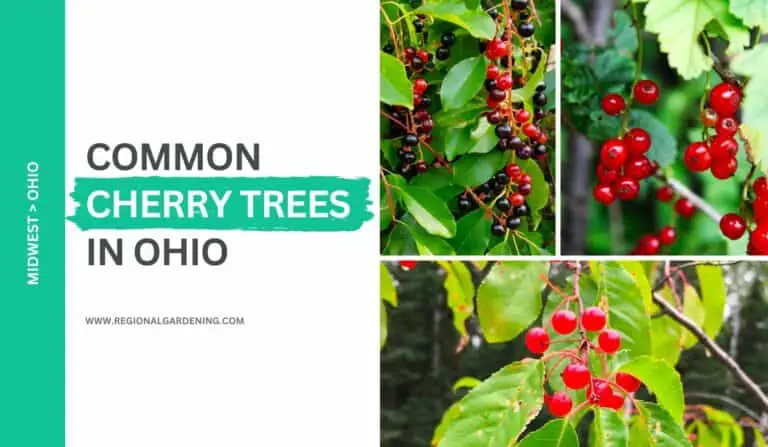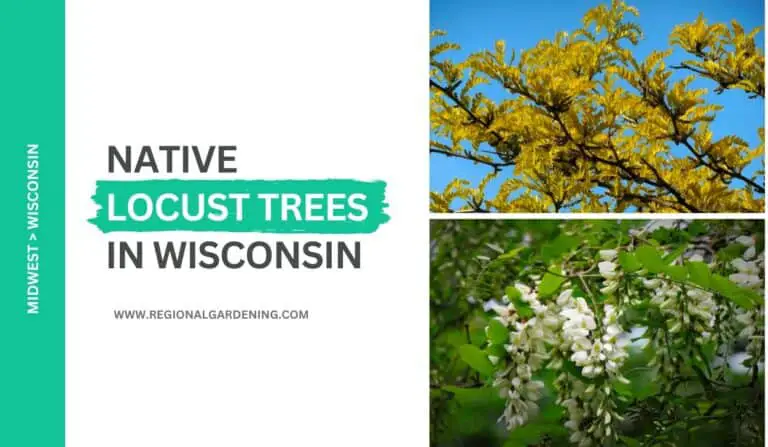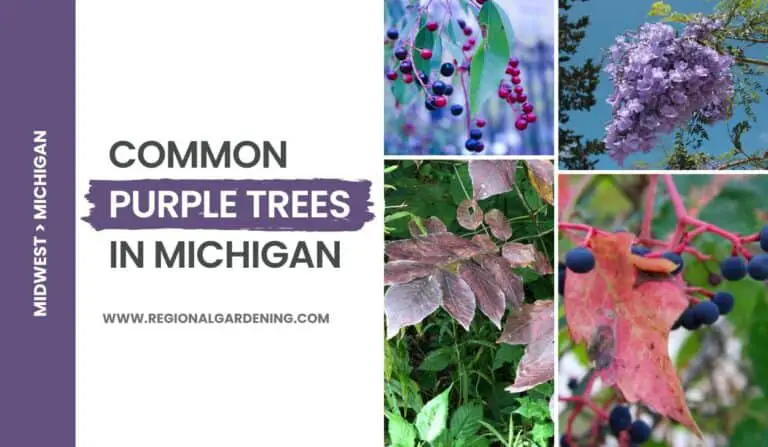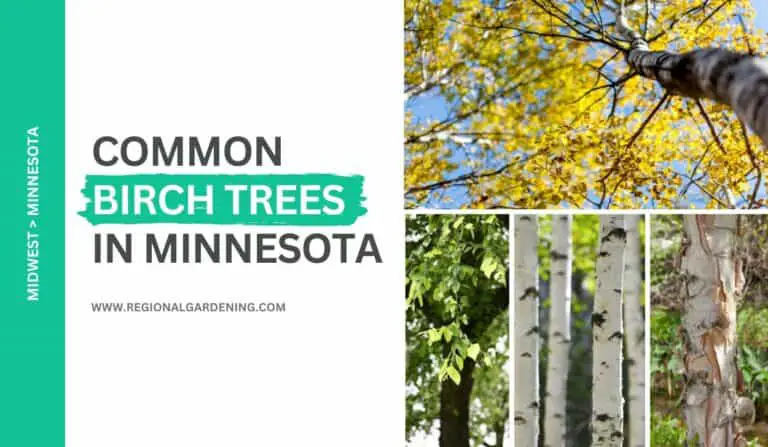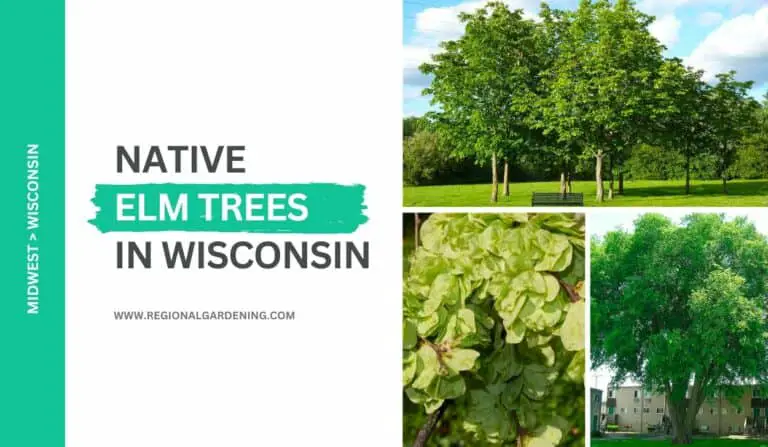Red Flowering Trees In Michigan (5 Types You Must Know)
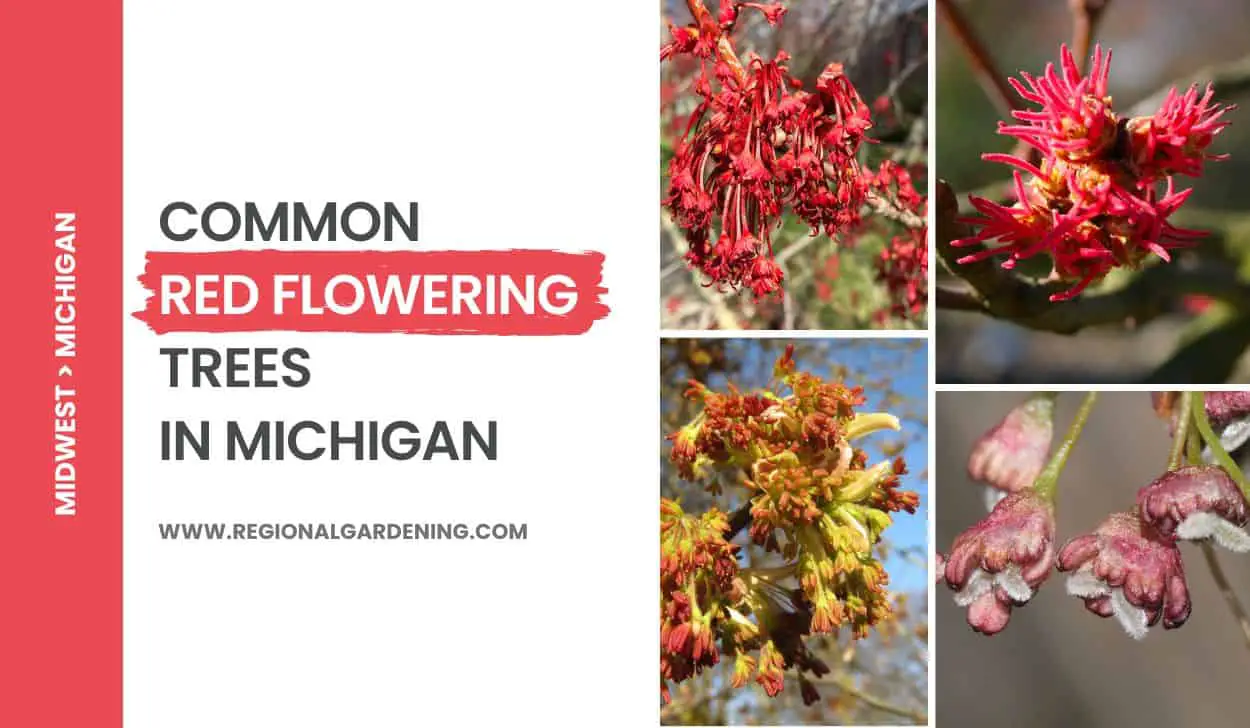
Have you ever wondered what was that red-flowering tree you saw on your recent hike through the countryside of Michigan?
Well, this is the right place to get the answer you want. In this article, I will walk you through the most commonly seen 5 types of red flowering trees in Michigan. Some of these trees are native to the state while some others are brought from other continents and naturalized here.
So, let’s get started.
1. American Elm
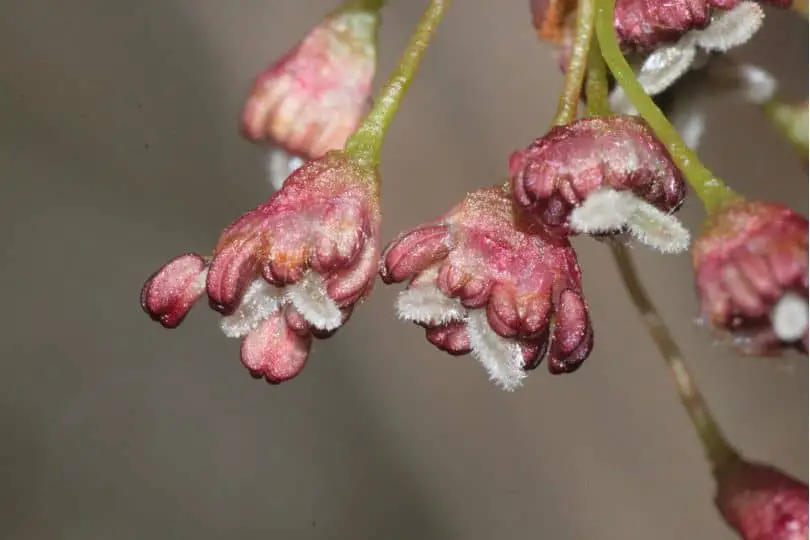
- Common Name: American Elm
- Scientific Name: Ulmus americana
- Mature Height: 70-100ft (21-30m)
- Flowers: Tiny red-brown flowers
- Native/Non-Native: Native
- Uses: Shade, boxes, furniture, paneling, etc.
The American Elm, often known as the White Elm, is a large tree that can reach heights of 100 feet (30.5 meters). It has a single trunk with conspicuous roots that flare out and gracefully fan out to form an upright vase shape. The tops of the branches frequently droop, giving the tree a distinctive aspect.
The leaves of the American Elm are simple and oval-shaped, and range in length from 3 to 6 inches (7.5 to 15 cm). The leaves are alternately connected and have a sharp apex and an uneven base. They have double-toothed edges and are slightly abrasive to the touch. Each leaf only contains 2 to 3 forked veins.
The tiny reddish-brown blossoms on this tree grow in groups and are barely 14 inches (.6 cm) in diameter. The blossoms give place to samaras, which are flat, fuzzy green disks that turn tan when they mature. The fruit is round to oval in shape and approximately 12 inches (1 cm) in diameter, with a notch opposite the fruit stalk.
The American Elm is a Michigan native that can live for 150 to 200 years! It thrives in moist soil and full sun.
This was one of the most commonly seen red flowering trees in Michigan, almost on every city street in eastern North America, but Dutch elm disease nearly wiped it out. Infected elm logs from Europe brought this disease to the United States in the 1920s, which is a fungus that destroys the tree’s vascular system.
Notwithstanding this setback, disease-resistant Dutch elm plants are now accessible in nurseries. The American Elm is a lovely and distinct tree that provides shade and is easily identified from a distance.
2. Boxelder
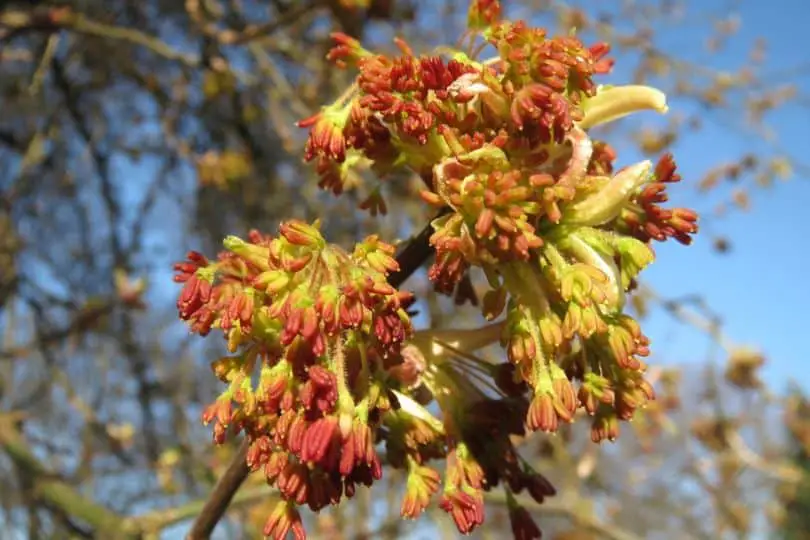
- Common Name: Boxelder Maple
- Scientific Name: Acer negundo
- Mature Height: 30-50ft (9-15m)
- Flowers: Smally red flower
- Native/Non-Native: Native
- Uses: Pulp, lumber, low-quality furniture, interior designing.
If you live in Michigan and wish to plant a pure red blooming tree, the Boxelder is a good choice. This tree is of medium size, but it has a crooked trunk and an uneven crown.
It has compound leaves, which are made up of 3 to 5 leaflets. Each leaflet is pale green, 2 to 4 inches long, and usually has three lobes. The leaflet’s border is irregularly serrated, giving it a distinct appearance.
The Boxelder has small reddish flowers that are only a quarter of an inch wide in the spring. These flowers grow on a one to three-inch-long stalk. The tree produces a pair of green-winged seeds that become brown and are roughly one to two inches long later in the year.
The Boxelder turns yellow in the fall, offering a wonderful flash of color to your garden. This Michigan native tree can live for 50 to 60 years. It likes to grow in full sun in damp regions beside streams, lakes, and flooded areas.
Although some people regard the Boxelder as a weed, it offers numerous advantages. During the winter, its seeds provide a valuable food source for wildlife.
You can even make maple syrup by tapping the tree in the spring! However, the Boxelder sap requires more sap than other maples to generate the same amount of syrup. There may also be harmless Boxelder Bugs on the tree. They consume the leaves but cause little damage.
3. Red Maple
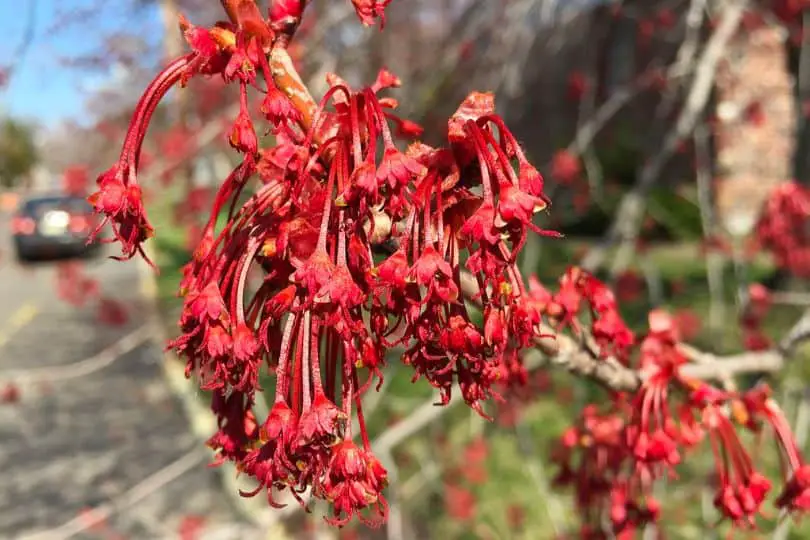
- Common Name: Red Maple, Swamp Maple, Soft Maple, Water Maple
- Scientific Name: Acer rubrum
- Mature Height: 40-60ft (12-18m)
- Flowers: Small red hanging flowers
- Native/Non-Native: Native
- Uses: Timber, Pulpwood, Fuel, Maple Syrup
The Red maple is the reddest of all the red flowering trees in Michigan. It can grow up to 40-60 feet tall. It has a single trunk and a narrow, dense crown of leaves.
One of the most noticeable things about the Red Maple is its leaves. They’re light green and about 3-4 inches long. They have 3-5 lobes (usually 3) and a double-toothed margin. You’ll notice shallow notches in between the lobes. The leafstalk (the stem that connects the leaf to the branch) is also red.
The Red Maple produces tiny red flowers in early spring that hangs from a 1-2 inch long red stalk. They grow in 1 to 3-inch wide clusters and the flowers are only a quarter-inch across.
The Red Maple’s leaves turn red or orange in the fall, which is very attractive. In the spring, the tree also produces a pair of winged seeds (called samaras) that are about half an inch to an inch long and red.
The Red Maple is a Michigan native that can live for 75-100 years. It prefers wet to moist soils, as well as swamps or depressions that hold water. It’s also one of Michigan’s most drought-tolerant maple species.
The Red Maple is also known as the Swamp Maple, Water Maple, and Soft Maple. Despite the name “Soft Maple,” the wood is extremely hard and brittle.
4. Crab Apple
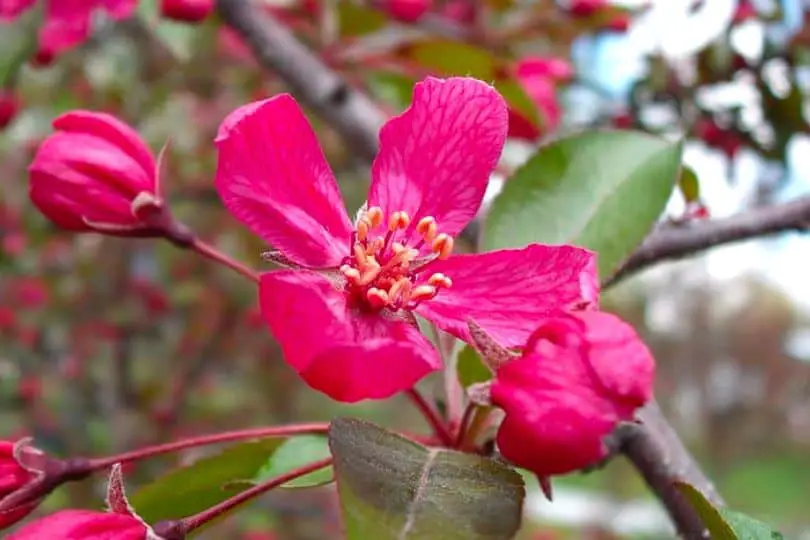
- Common Name: Crab Apple
- Scientific Name: Malus spp
- Mature Height: 10-20ft (3-6m)
- Flowers: White to pink or Red flowers
- Native/Non-Native: Non-Native
- Uses: Ornamental, Food source
Crab apple trees are one of the most commonly seen flowering trees that can be found in Michigan.
This is one of the shortest red flowering trees in Michigan as well. They can reach 20 feet in height and have a single crooked trunk with a big open crown.
The leaves are simple and oval, measuring 2 to 3 inches long, and have a double-toothed border. The upper side of the leaves is dark green, while the lower side is lighter in color, smooth, and hairless. The bark is gray, with numerous scales and thorns on the twigs.
The blooms of the crab apple tree are one of its most appealing aspects. Unlike other red flowering trees in Michigan, they are not completely red. The flowers have five petals and range in color from white to pink or crimson red. They are approximately 1 to 2 inches broad and can be quite dazzling. The blooms bloom in the spring and can be found all around Michigan.
The tree also bears edible fruits. The fruit is similar to but smaller than store-bought apples. They range in hue from green to yellow to red and have a diameter of 1 to 3 inches. The fruit can be eaten raw or made into jams and jellies.
Crab apple trees were introduced to Michigan during colonial times and are not native to the state. They escaped cultivation and can now be found in the wild. They are a vital source of food for wildlife and can grow in a wide range of soil and light conditions. They are frequently seen in cities or on abandoned sites.
5. Silver Maple

- Common Name: Silver Maple
- Scientific Name: Acer saccharinum
- Mature Height: 75-100ft (23-30m)
- Flowers: Tiny red flower
- Native/Non-Native: Native
- Uses: Timber, flooring, paper, light syrup
One of the tallest red flowering trees in Michigan, the Silver Maple, commonly known as Acer saccharinum, can grow to be 75 to 100 feet tall. It has a single trunk with rising branches that form an open crown.
Silver Maple leaves are 4 to 6 inches long, lobed, and attached oppositely on the branches. They have 5–7 lobes with pointy tips, deep notches, and a double-toothed border. The leaves are dull green on the upper surface and silvery white on the underside.
The Silver Maple has small red dangling blossoms that grow about 14 inches wide in the spring. The flowers grow on a stem that is 1 to 2 inches long. The tree also produces a pair of green-winged seeds known as samaras, which become brown and measure 1 to 2 12 inches in length.
The Silver Maple is a Michigan native that thrives in damp to moist soils, frequently in pure stands in floodplains. When young, the bark is gray and smooth, but as it grows, it becomes furrowed with long scaly strips that peel and curl at the edges. The tree’s autumn hue ranges from yellow to orange.
The Silver Maple is one of the first trees to bloom in the spring, and its flowers are sometimes misidentified as buds. It produces a lot of seeds and is generally found growing in bottomlands or floodplains near rivers, where it is the dominating tree.
It is also known as the Silver-leaf Maple due to the silvery look of its leaves and the Soft Maple because of its brittle branches, which frequently fall off in windstorms. The wood of the Silver Maple, on the other hand, is highly durable and has a tight grain.
Similar Articles
- Native Birch Trees In Michigan
- Native Elm Trees In Michigan
- Common Nut Trees In Michigan
- Common White Bark Trees In Michigan
- Common Ash Trees In Michigan
- Common Willow Trees In Michigan
- Common Spruce Trees In Michigan
- Common Maple Trees In Michigan
- Common Purple Trees In Michigan
- Yellow Flowering Trees In Michigan
- White Flowering Trees In Michigan
- Common Hickory Trees In Michigan
- Common Oak Trees In Michigan
Red Flowering Trees In Michigan – Sources
The Regional Gardening team makes sure that the information in our articles is accurate by only using sources that are known to be trustworthy. Some of these sources are peer-reviewed journals from government agencies, well-known universities, and scientific research organizations.
- Book – Michigan Trees A Guide to the Trees of the Great Lakes Region
- Book – Field Manual of Michigan Flora
- Book – Trees Of Michigan Field Guide
- Michigan’s Forests, Department of Natural Resources
- Michigan Botanical Society
- LSA Herbarium, University Of Michigan
- Department Of Forestry, Michigan State University
- Michigan Nature Association


